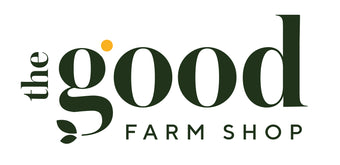Exploring Chicken Choices in Australia: Certified Organic, Regeneratively Raised, Free-Range and Conventionally Raised
When it comes to choosing chicken, the variety of options can be overwhelming. In Australia, the poultry market offers several distinct categories: certified organic, free-range, conventionally raised, and a newer category gaining attention, regeneratively raised chicken. Each of these options differs significantly in how the chickens are raised, fed, and treated. Understanding these differences can help you make informed choices that align with your values and preferences. We use certified organic chicken in all our meals because we don't want to compromise on animal welfare, human health and or quality of the meat - plus it definitely tastes better! We absolutely love supporting regenerative practises too, especially buying direct from the farmer. Free-range and conventional is out of the equation for us.
Certified Organic Chicken
Certified organic chicken follows stringent standards set by bodies like Australian Certified Organic (ACO) and the National Association for Sustainable Agriculture Australia (NASAA). Key features include:
-
Feed: These chickens are fed certified organic feed, free from synthetic pesticides, herbicides, and genetically modified organisms (GMOs). This feed is closely monitored and regulated.
-
Living Conditions: Certified organic chickens have outdoor access with specific requirements for space and shelter. They are provided with a natural environment that supports their well-being.
-
No Antibiotics or Hormones: The use of antibiotics and synthetic growth hormones is prohibited. If a chicken requires antibiotics, it can no longer be sold as organic.
- No Chlorinated Spin Chilling: For organic poultry, the use of chlorine or other synthetic chemicals in processing is restricted. Instead, organic producers may use alternative methods such as air chilling or water chilling without the use of synthetic chemicals to ensure food safety and quality. These methods focus on maintaining the integrity of the organic product and adhering to the principles of organic farming and processing, which prioritise natural and sustainable practices.
-
Animal Welfare: There is a strong focus on animal welfare, with standards ensuring humane treatment and the ability for chickens to express natural behaviours.
Regeneratively Raised Chicken
Regeneratively raised chicken is an emerging option that emphasises ecological and sustainable farming practices. This approach includes:
-
Feed: Chickens are typically fed a diverse diet that may include organic or non-GMO grains, along with access to foraging in pastures, which can include insects and plants.
-
Living Conditions: These chickens are raised on pasture, allowing for natural foraging behaviours. The farms use rotational grazing systems to move chickens frequently, which helps regenerate the land and improve soil health.
-
No Antibiotics or Hormones: Similar to organic standards, the use of antibiotics and synthetic hormones is generally avoided to maintain the health of both the birds and the ecosystem.
-
Environmental and Animal Welfare: Regenerative farming practices focus on enhancing biodiversity, soil health, and animal welfare. Chickens are raised in a way that promotes their natural behaviours and contributes positively to the environment.
- No Chlorinated Spin Chilling: While not banned Chlorinated spin chilling is generally not used in regeneratively farmed chicken practices. Regenerative farming emphasises sustainable and ecologically friendly practices, focusing on soil health, biodiversity, and animal welfare. This philosophy often extends to the processing methods used for the meat. Producers who follow regenerative farming principles typically aim to avoid synthetic chemicals, including chlorine, in their processing methods. Instead, they may use alternatives like air chilling or non-chlorinated water chilling to cool the chicken carcasses. These methods align more closely with the values of natural and sustainable production, as they do not involve synthetic additives or chemicals.
Free-Range Chicken
Free-range chicken offers a popular alternative, though the term can be loosely defined. In Australia, the key aspects of free-range chicken are:
-
Outdoor Access: Free-range chickens must have access to the outdoors, with a maximum outdoor stocking density of 10,000 birds per hectare, though lower densities are often practiced.
-
Feed: There are no specific restrictions on the type of feed, which may include GMOs.
-
Antibiotics and Hormones: The use of antibiotics is permitted, and chickens may be treated if necessary. Hormones for growth promotion are not used in Australian poultry.
-
Welfare Considerations: While free-range chickens generally have better living conditions than conventionally raised ones, the specifics can vary widely between producers.
- Usually uses Chlorinated Spin Chilling: Unlike organic standards, which restrict the use of synthetic chemicals, free-range standards primarily focus on the conditions in which the chickens are raised, such as outdoor access and stocking density. Therefore, the processing methods, including chlorinated spin chilling, are not typically restricted under free-range guidelines. However, some free-range producers may choose to use alternative chilling methods, such as air chilling, based on their specific practices or market preferences.
Conventionally Raised Chicken
Conventionally raised chicken is the most commonly available and affordable option. These chickens are raised in intensive farming systems characterised by:
-
Housing: They are typically kept in large indoor sheds with controlled environments and high stocking densities, limiting their ability to move freely.
-
Feed: A standard diet is provided, often including GMOs and non-organic ingredients, aimed at maximising growth efficiency.
-
Antibiotics and Hormones: Antibiotics are commonly used to prevent disease in dense populations. The use of growth hormones is banned in Australia but other growth promotants may be used.
-
Welfare Standards: The focus in conventional farming is on productivity and cost-effectiveness, which can lead to lower welfare standards compared to other methods. Living conditions are over crowed and chickens have many more ailments.
-
Yes, chlorinated spin chilling: A widely accepted and efficient method in the conventional poultry industry because it helps to ensure food safety by significantly lowering the microbial load on the chicken. The use of chlorine in the water acts as a disinfectant, reducing the risk of contamination and extending the shelf life of the meat. This process is particularly prevalent in conventional poultry processing due to its cost-effectiveness and efficiency, making it a common choice for large-scale production. While alternative methods such as air chilling are available, chlorinated spin chilling remains a dominant practice in the conventional poultry sector.
Choosing the Right Option
The choice between certified organic, free-range, conventionally raised, and regeneratively raised chicken depends on your priorities and values. Certified organic and regeneratively raised options are often more expensive but offer higher standards for feed quality, animal welfare, and environmental sustainability. Free-range provides a middle ground, balancing cost and welfare considerations. Conventionally raised chicken is the most budget-friendly option but comes with trade-offs in terms of welfare and environmental impact.
Ultimately, understanding these distinctions allows you to make informed decisions that reflect your dietary preferences, ethical considerations, and environmental concerns. Whether you prioritise affordability, animal welfare, or ecological sustainability, there's a chicken option that aligns with your values.




















Great article. May I ask where you buy your chicken from?
Thanks
Leave a comment